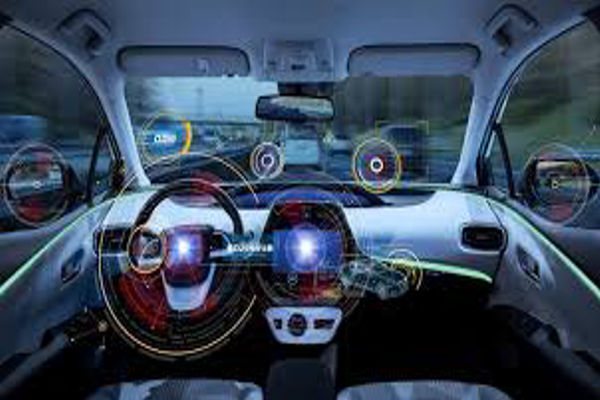The automotive industry is undergoing a transformative shift with the advent of connected cars, revolutionizing mobility, safety, and transportation efficiency. One of the most critical advancements in this field is Vehicle-to-Everything (V2X) communication, a technology that enables vehicles to interact with their surroundings, including other vehicles, infrastructure, pedestrians, and networks. As smart cities and autonomous driving take center stage, V2X is poised to become a foundational technology in modern intelligent transportation systems.
Understanding V2X Communication
V2X is an umbrella term that encompasses different types of vehicle communication technologies, including Vehicle-to-Vehicle (V2V), Vehicle-to-Infrastructure (V2I), Vehicle-to-Pedestrian (V2P), and Vehicle-to-Network (V2N). These communication modes work together to enhance road safety, optimize traffic flow, and provide real-time data for a seamless driving experience.
- Vehicle-to-Vehicle (V2V): V2V allows vehicles to exchange information about speed, position, and movement. This capability helps in preventing collisions, reducing congestion, and enhancing situational awareness. For instance, if a car suddenly brakes, nearby vehicles receive alerts, enabling them to react in time to avoid accidents.
- Vehicle-to-Infrastructure (V2I): V2I communication links vehicles with traffic signals, road signs, and other infrastructure elements. This helps in optimizing traffic lights for smoother flow, reducing fuel consumption, and alerting drivers about road hazards, construction sites, or adverse weather conditions.
- Vehicle-to-Pedestrian (V2P): With V2P, vehicles can communicate with pedestrians and cyclists carrying connected devices, such as smartphones or wearables. This interaction enhances pedestrian safety by alerting drivers about people crossing the road in low-visibility conditions.
- Vehicle-to-Network (V2N): V2N enables cars to connect with cloud-based services, leveraging high-speed internet for navigation updates, real-time traffic information, and infotainment. This technology is crucial for integrating autonomous vehicles into smart city ecosystems.
Technologies Powering V2X Communication
V2X communication relies on two primary technologies: Dedicated Short-Range Communication (DSRC) and Cellular V2X (C-V2X).
- Dedicated Short-Range Communication (DSRC): DSRC is a wireless communication protocol based on Wi-Fi that operates in the 5.9 GHz frequency band. It provides low-latency communication, making it highly suitable for safety-critical applications like collision avoidance. However, its range and scalability limitations have led to the development of alternative solutions.
- Cellular V2X (C-V2X): C-V2X utilizes existing cellular networks (4G LTE and 5G) to facilitate vehicle communication. It offers greater coverage, reliability, and scalability than DSRC, making it a preferred choice for modern connected car applications. The low latency of 5G further enhances real-time communication, ensuring swift response times for autonomous and assisted driving systems.
Benefits of V2X Communication
The widespread adoption of V2X communication brings a multitude of benefits, fundamentally transforming the driving experience and road safety landscape.
- Enhanced Road Safety: V2X technology significantly reduces accidents by providing early warnings about potential collisions, road obstructions, and dangerous driving conditions. By sharing real-time data, vehicles can anticipate and react to threats before they become critical.
- Reduced Traffic Congestion: Intelligent traffic management enabled by V2X optimizes road usage by dynamically adjusting traffic signals and rerouting vehicles to less congested roads. This leads to reduced travel times and improved overall traffic efficiency.
- Lower Fuel Consumption and Emissions: By minimizing idling at traffic signals and enabling eco-friendly driving strategies, V2X contributes to fuel savings and reduced carbon emissions, supporting global sustainability efforts.
- Improved Emergency Response: In case of accidents or medical emergencies, V2X allows vehicles to communicate directly with emergency services, providing precise location data and real-time incident reports, expediting response times.
Challenges and Roadblocks
Despite its promising potential, V2X communication faces several challenges that must be addressed for widespread deployment.
- Infrastructure Development: Successful implementation of V2X requires extensive infrastructure investment, including smart traffic lights, connected road signs, and high-speed network availability. Governments and private sectors need to collaborate for efficient deployment.
- Data Privacy and Security: With increased connectivity comes the risk of cyber threats and data breaches. Ensuring robust encryption, authentication protocols, and secure networks is essential to prevent unauthorized access and potential malicious attacks on vehicles.
- Standardization and Interoperability: V2X adoption requires global standardization to ensure seamless communication between vehicles from different manufacturers and across various geographic regions. Efforts are underway to harmonize regulations and technological frameworks.
- Adoption Rate: The benefits of V2X can only be fully realized when a significant percentage of vehicles and infrastructure are equipped with compatible technology. Encouraging automakers and road authorities to prioritize V2X integration is crucial.
The Future of V2X and Connected Cars
The future of connected cars and V2X communication is promising, with advancements in 5G technology, artificial intelligence, and edge computing set to enhance the efficiency and reliability of vehicle networks. Governments worldwide are investing in smart city projects, where V2X will play a central role in achieving safer, more efficient, and sustainable urban mobility.
As autonomous driving technology progresses, V2X will serve as a vital enabler, bridging the gap between human-driven and self-driving vehicles. The integration of V2X with AI-powered traffic management systems, cloud-based analytics, and Internet of Things (IoT) devices will create a highly interconnected transportation ecosystem.
In conclusion, connected cars and V2X communication are ushering in a new era of intelligent transportation. While challenges remain, the potential benefits far outweigh the obstacles. As automotive technology continues to evolve, V2X will be instrumental in shaping the future of mobility, making roads safer, traffic flow smoother, and transportation more sustainable for generations to come.













